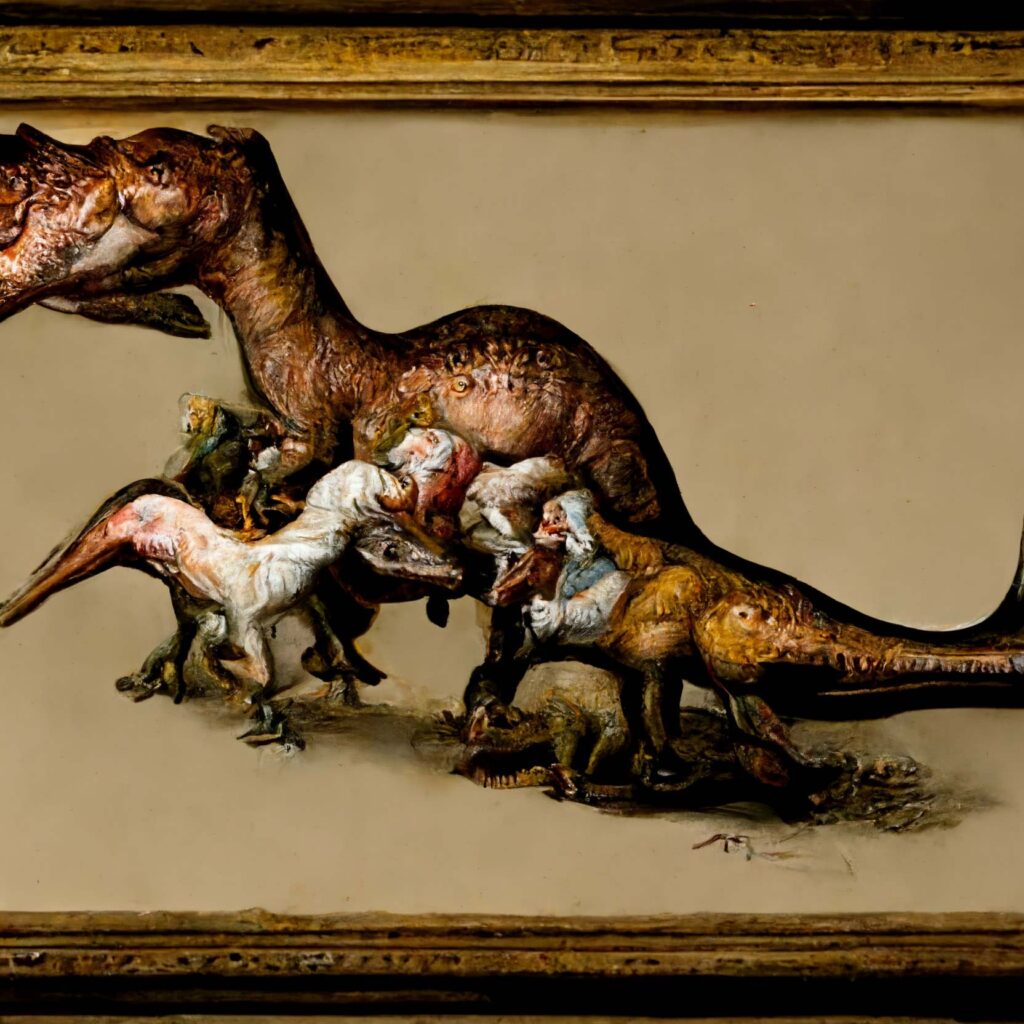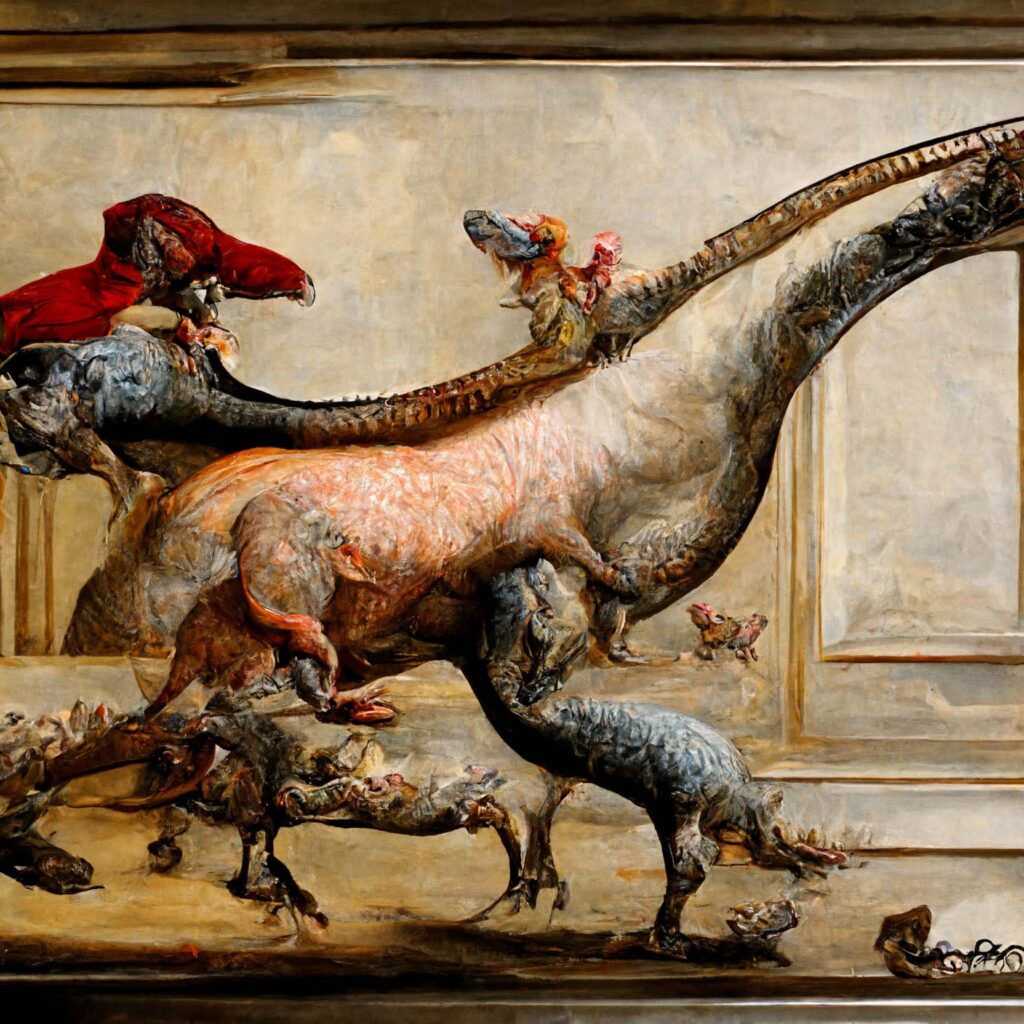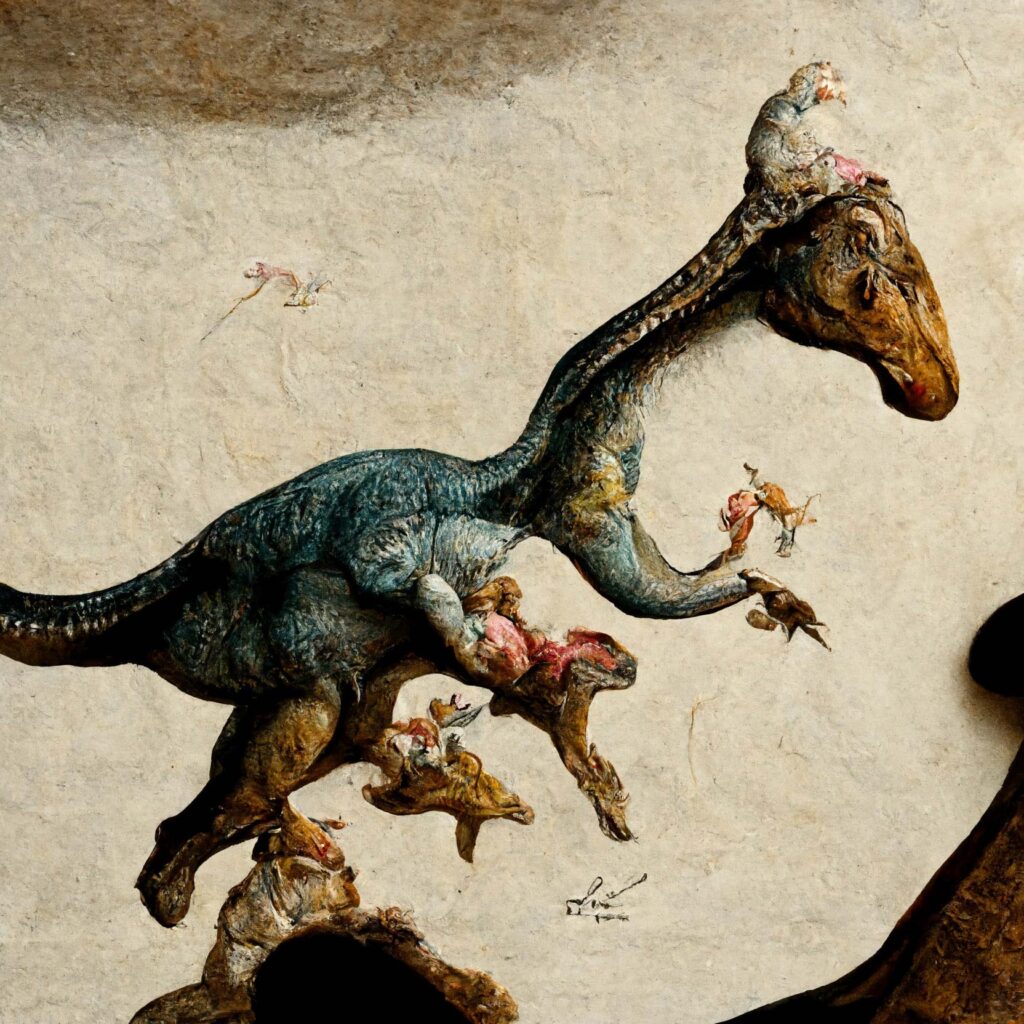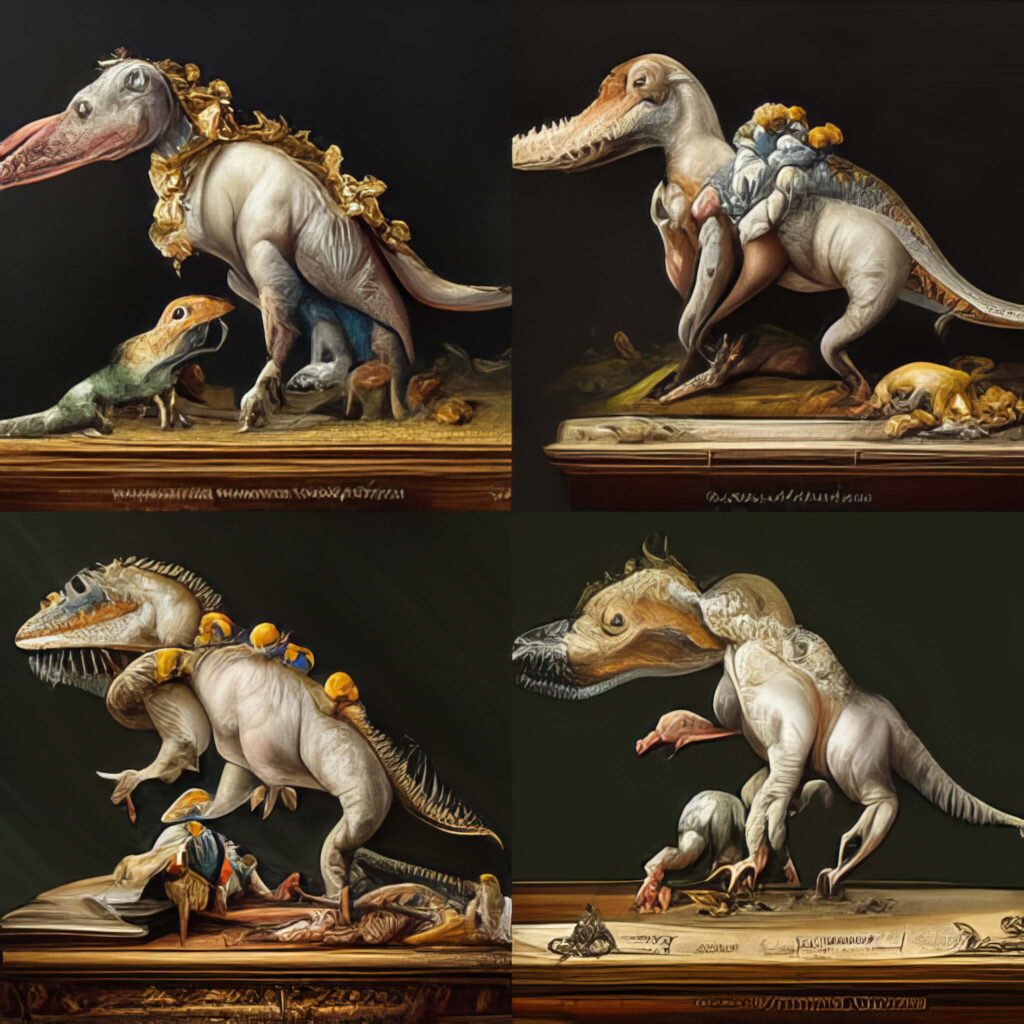Dinosaurs in the Salon: An Alternate Timeline
admin
I have often found myself wondering if people of the Rococo age knew about the existence of dinosaurs.
In “my time”… AKA, the olden days of the 00’s, high school inquiries about the historical cognizance of dinosaurs might have earned one quizzical stares, I found solace in the non-judgmental expanse of ChatGPT. Here, no question is too trivial, no curiosity too quaint.
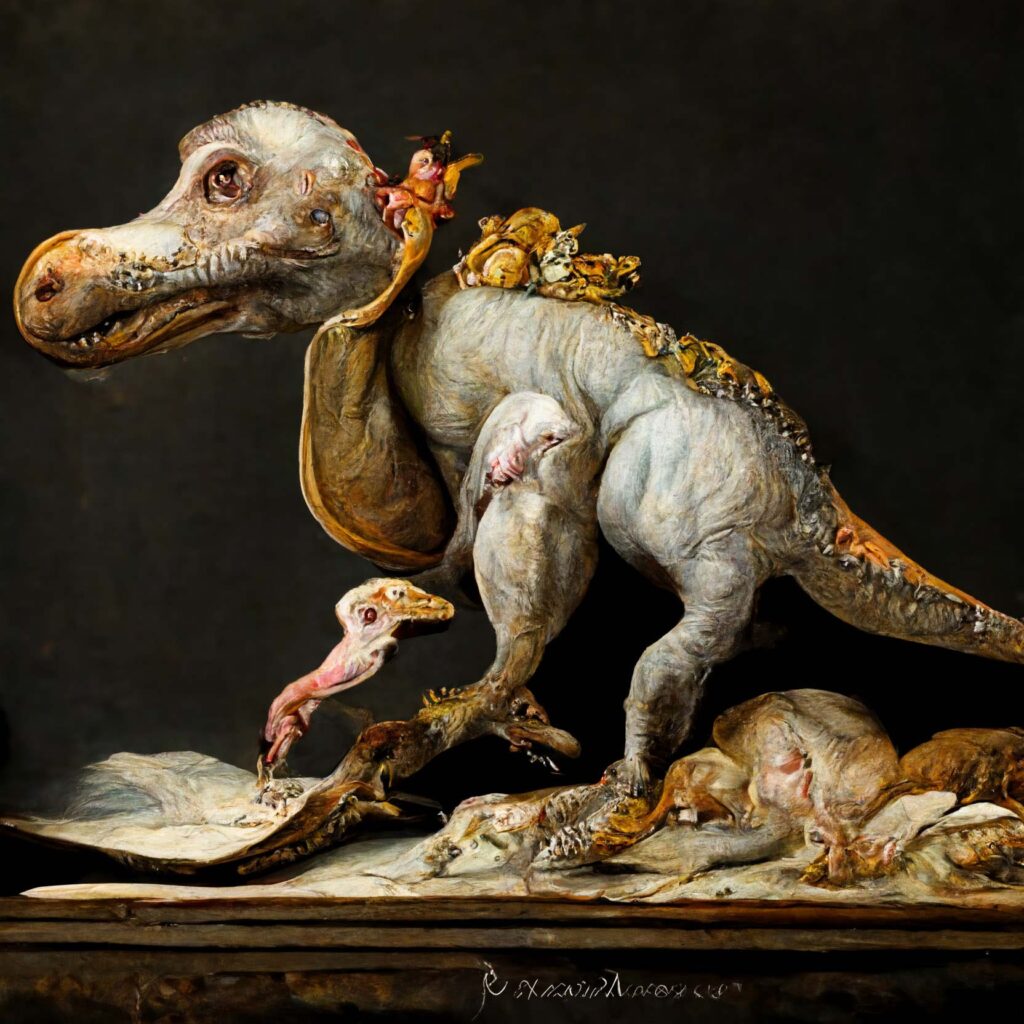

The Rococo age, resplendent with its ornate artistry and architectural elegance, unfolded oblivious to the colossal creatures that had once roamed the earth. It’s an intriguing musing—how would the Rococo sensibilities have interpreted the grandeur of the dinosaurs had they known? It’s a question that belies a simple answer, but not for the lack of imagination.
While the gilded scrolls and pastel frescoes of the Rococo era graced the walls of French salons, the bones of ancient leviathans lay silently entombed within the earth, their stories yet untold. Fossils, though known, were enshrouded in mythology or mistaken for the remains of contemporary fauna. The science of paleontology was still slumbering in the womb of intellectual thought, awaiting its birth in the centuries to come.
It was in this realm of artistic opulence and scientific naiveté that I embarked on an anachronistic adventure: to cast the titans of the Mesozoic in the delicate frivolity of Rococo art. Midjourney v02, my digital atelier, rose splendidly to the occasion.
In this fusion of time and theory, I envisioned a tableau where triceratops took tea with the marquise, and velociraptors vogued in Versailles. Here, the behemoths of antiquity were not predators and prey but patrons and posers in a sumptuous spectacle of curves and cherubs.
ChatGPT’s historical insights paved the way for this whimsical amalgamation, grounding my artistic dalliance in the rich loam of knowledge. The Rococo period, while bereft of paleontological prowess, was a testament to human creativity—a mirror reflecting the ornate tastes of its time.
And so, as the Rococo’s intricate arabesques and playful motifs danced across canvas and chateau, I tasked the AI with breathing prehistoric life into this bygone era of artistic exuberance. The resulting works—sublimely anachronistic, teasingly impossible—stand as tributes to the power of human curiosity that spans epochs and enlivens even the most staid of historical narratives with the roars of ancient beasts.
